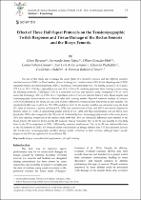Por favor, use este identificador para citar o enlazar este ítem:
https://repositorio.usj.es/handle/123456789/497
Registro completo de metadatos
| Campo DC | Valor | Lengua/Idioma |
|---|---|---|
| dc.contributor.author | Berzosa Sánchez, César | - |
| dc.contributor.author | Sanz-López, Fernando | - |
| dc.contributor.author | Gonzalo-Skok, Óliver | - |
| dc.contributor.author | Valero-Campo, Carlos | - |
| dc.contributor.author | Arjol-Serrano, José Luis | - |
| dc.contributor.author | Piedrafita, Eduardo | - |
| dc.contributor.author | Aladren, Guillermo | - |
| dc.contributor.author | Bataller-Cervero, Ana Vanessa | - |
| dc.date.accessioned | 2021-02-25T12:00:53Z | - |
| dc.date.available | 2021-02-25T12:00:53Z | - |
| dc.date.issued | 2020-10 | - |
| dc.identifier.citation | Berzosa, C., Sanz-López, F., Gonzalo-Skok, O., Valero-Campo, C., Luis Arjol-Serrano, J., Piedrafita, E., Aladrén, G., & Vanessa Bataller-Cervero, A. (2020). Effect of Three Half-Squat Protocols on the Tensiomyographic Twitch Response and Tissue Damage of the Rectus Femoris and the Biceps Femoris, Journal of Human Kinetics, 75(1), 15-27. doi: https://doi.org/10.2478/hukin-2020-0034 | es_ES |
| dc.identifier.issn | 1899-7562 | es_ES |
| dc.identifier.uri | https://repositorio.usj.es/handle/123456789/497 | - |
| dc.description.abstract | The aim of this study was to analyse the acute effects of a concentric exercise and two different eccentric overload exercises (EOEs) on blood markers of muscle damage (i.e. creatine kinase [CK], lactate dehydrogenase [LDH], myoglobin [Myo], and malondialdehyde [MDA]) and muscle contractile properties. Ten healthy, young (27 ± 1.5 years, 179 ± 6 cm, 78.7 ± 10.8 kg), physically active men (3.5 ± 1.9 h·w-1) randomly performed three training sessions using the following protocols: a half-squat (HS) as a concentric exercise, and exercises using Versapulley (VP) or YoYo isoinertial technology (YIT) as EOEs (4 x 7 repetitions with a 2 min rest interval between sets). Blood samples and tensiomyography measurements were obtained after each training session. Repeated measures analysis of variance (ANOVA) followed by the Tukey test was used to detect differences between the four time points of each variable. The standardized difference or effect size (ES, 90% confidence limit) in the selected variables was calculated using the basal SD. After all exercises, a greater activity of CK, LDH, and concentration of Myo, and MDA were found compared to baseline values (p < 0.05). A substantially greater activity of CK, LDH, and Myo concentration, but not MDA, were found after EOEs when compared to the HS protocol. Substantially lower tensiomyography results in the rectus femoris (RF) were reported, irrespective of the exercise mode performed. Also, no substantial differences were obtained in the biceps femoris (BF) between EOEs and the HS protocol. Time of contraction (Tc) in the RF was possibly to very likely lower in the HS in comparison to EOEs. Additionally, muscular displacement (Dm) in the RF was substantially lower in the HS compared to EOEs. VP produced higher concentrations of damage markers than YIT and concentric exercise did. Furthermore, tensiomyography variables showed similar activation in both exercises, although higher specific fatigue (in the RF) was registered in the traditional HS. | es_ES |
| dc.format.extent | 13 p. | es_ES |
| dc.format.mimetype | application/pdf | es_ES |
| dc.language.iso | eng | es_ES |
| dc.publisher | SCIENDO | es_ES |
| dc.relation | This work was supported by the Operative Program ERDF Aragon 2014-2020, "Building Europe from Aragon", Research Group ValorA, Grant No. S08_17R and by Fondo Social Europeo "Construyendo Europa desde Aragon". | es_ES |
| dc.rights | Attribution-NonCommercial-NoDerivatives 4.0 Internacional | * |
| dc.rights.uri | http://creativecommons.org/licenses/by-nc-nd/4.0/ | * |
| dc.subject | Fatigue | es_ES |
| dc.subject | Musculoskeletal | es_ES |
| dc.subject | Performance | es_ES |
| dc.subject | Strength training | es_ES |
| dc.title | Effect of Three Half-Squat Protocols on the Tensiomyographic Twitch Response and Tissue Damage of the Rectus Femoris and the Biceps Femoris | es_ES |
| dc.type | info:eu-repo/semantics/article | es_ES |
| dc.identifier.doi | DOI: 10.2478/hukin-2020-0034 | es_ES |
| dc.rights.accessrights | info:eu-repo/semantics/openAccess | es_ES |
| Aparece en las colecciones: | Artículos de revistas | |
Ficheros en este ítem:
| Fichero | Descripción | Tamaño | Formato | |
|---|---|---|---|---|
| Effect of Three Half-Squat Protocols on the Tensiomyographic Twitch Response and Tissue Damage of the Rectus Femoris and the Biceps Femoris.pdf | 350,54 kB | Adobe PDF |  Visualizar/Abrir |
Este ítem está sujeto a una licencia Creative Commons Licencia Creative Commons

